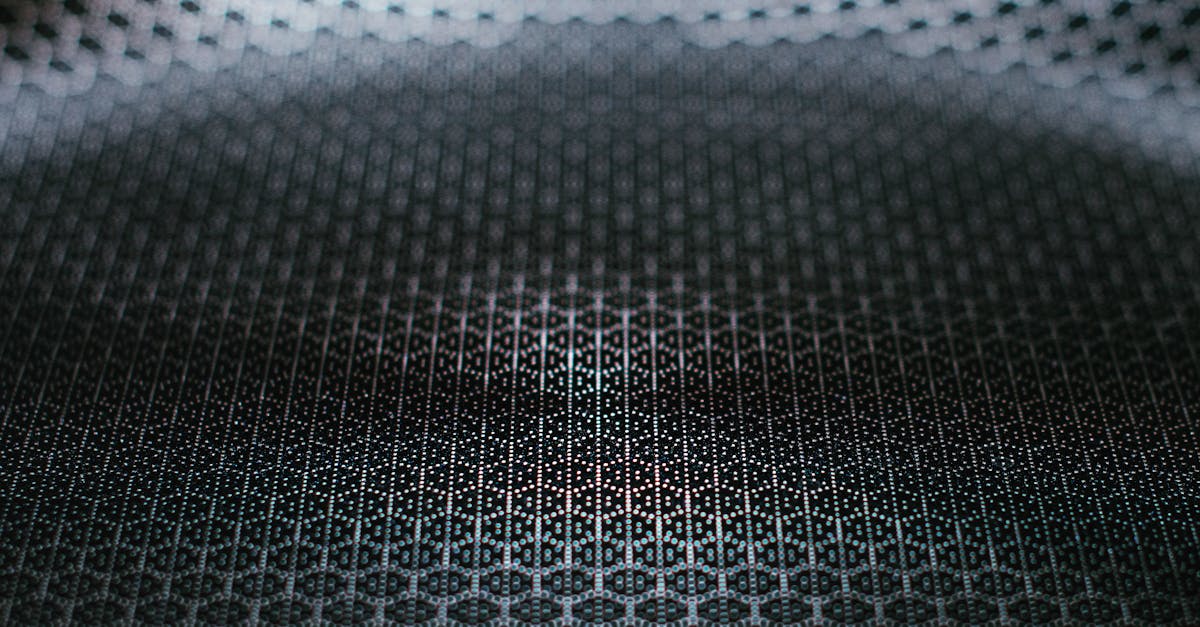Unraveling The Futuristic Fabric Tales
Introduction
In recent years, the textile industry has undergone a radical transformation with the emergence of futuristic fabrics. These innovative materials are revolutionizing not just fashion, but also fields ranging from medicine to space exploration. The shift towards high-tech fabrics is driven by the need for sustainability, performance, and adaptability. Developers are merging science and creativity to design materials that can do everything from monitoring health to generating energy. This convergence heralds a new era of textiles, promising groundbreaking applications. But how did we arrive here, and what does the future hold for the fabric universe?
Advertisement
The Birth of Smart Fabrics
Smart fabrics represent one of the most visionary strides in textile technology. At their core, these materials are embedded with sensors and electronics, enabling them to interact with the environment. For instance, garments can now monitor vital signs or adjust to temperature changes, ensuring wearers remain comfortable. The concept marries the essence of wearable technology with clothing, hinting at limitless possibilities. Initially developed for military applications, smart fabrics are now branching into consumer markets. As production costs decrease, widespread accessibility is anticipated. This innovation underscores humanity's ability to merge technology seamlessly into daily life.
Advertisement
Plant-Based and Sustainable Textiles
As environmental concerns mount, the textile industry is responding with eco-friendly innovations. Plant-based textiles offer a sustainable alternative, using materials such as pineapple leaves, banana fibers, and hemp. These fabrics often use minimal water and chemicals, resulting in a reduced carbon footprint. Furthermore, they provide biodegradability, addressing the prevalent issue of textile waste in landfills. Pioneering companies are harnessing biotechnology to develop lab-grown fabrics, mimicking nature without exploiting resources. This drive towards green textiles not only alleviates environmental pressures but also paves the way for a more sustainable future in fashion.
Advertisement
High-Performance Fibers in Sport
In sportswear, the need for materials that can withstand extreme conditions while optimizing performance has led to the creation of high-performance textiles. These fabrics boast moisture-wicking properties, UV protection, and enhanced durability. Advances in nanotechnology facilitate microscopic changes in fabric structure, resulting in unparalleled resilience. Athletes now benefit from gear that not only augments performance but also ensures safety. The incorporation of compression fabrics additionally aids muscle recovery by improving circulation. As the boundary between sports science and textiles blurs, the realm of possibilities continues to expand.
Advertisement
Medical Textiles: A Healing Fabric Revolution
In the healthcare sector, futuristic textiles are making an indelible mark with their ability to transform patient care. Developed to be antimicrobial, wound-detecting, and drug-delivering, these fabrics offer innovative solutions to medical challenges. For example, bandages infused with antimicrobial agents can reduce infection risks, while smart fabrics help monitor patients' conditions non-invasively. They also find applications in rehabilitation, from compression garments to bioactive textiles that release therapeutic agents. As the technology matures, the integration of textiles in medical treatment is set to revolutionize recovery processes.
Advertisement
The Energy-Generating Textiles Frontier
The quest for sustainable energy sources has even reached the realm of textiles, with energy-generating fabrics making their debut. These materials incorporate photovoltaic cells or triboelectric nanogenerators, generating energy through movement. Imagine clothing that can power your gadgets as you walk! This technology opens doors to perpetual energy sources conveniently integrated into everyday items. As research progresses, these fabrics could play a crucial role in reducing the global reliance on traditional power sources. The implications stretch beyond personal energy efficiency, offering a glimpse into a world of interconnected, self-sustaining devices.
Advertisement
From Space Exploration to Fashion Innovation
The application of futuristic fabrics is not confined to Earth—outer space missions also benefit from innovative textiles. Space agencies are developing suits that regulate temperature, offer radiation protection, and even self-heal minor damages. However, the inspiration is mutual; space-grade textiles also incite fashion designers on Earth. Avant-garde designers are exploring materials that can change colors or create dynamic silhouettes based on environmental cues. The collaboration proves that the marriage of science and art in textiles can lead to unparalleled creativity. This cross-pollination fosters experimentation, resulting in awe-inspiring trends.
Advertisement
Addressing the Industry's Ethical Concerns
As textiles evolve, ethical considerations regarding transparency and labor practices cannot be overlooked. The emphasis on biofabrication and environmentally conscious materials addresses some environmental concerns. However, the industry must also ensure ethical labor practices and equitable global distribution. Transparent supply chains and fair wages must accompany technological advancements for the next chapter in textile development. In doing so, the industry can ensure that, alongside stunning innovation, it's aligned with broader ethical goals. By combining technology with ethical practices, we can embellish the narrative of the textile industry.
Advertisement
Educating Tomorrow's Textile Innovators
With rapid advancements, educating future designers and engineers on the textile frontier becomes imperative. Institutions worldwide are integrating textile innovation into their curricula, underscoring the potential these fabrics offer. Students are trained in multidisciplinary approaches, blending engineering, design, and environmental sciences. The intent is to foster a new generation of innovators who can contribute creatively and ethically to changing industries. As they navigate challenges and uncover new territories, these budding creators are laying the foundations for the future of textiles. This educational emphasis ensures that the evolution of fabrics remains a thriving and conscientious endeavor.
Advertisement
Conclusion
The realm of futuristic fabrics is ever-expanding, illustrating humankind's capacity to innovate and adapt. From smart fabrics and sustainable textiles to exploring space, innovation is redefining possibilities. Combining sustainability with dynamic functionality, these textiles are not just reshaping industries but society itself. As the narrative unfolds, it challenges us to ponder: what other hidden potentials lie within threads and fibers? Engaging with this textile revolution beckons us to envision a future where technology, ethics, and creativity entwine harmoniously.
Advertisement

